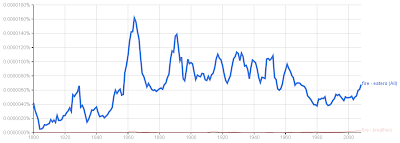"It is to ensure that he tells the truth," I reminded him again. "If facial-analysis software can read the subject's true emotion from his facial expression and check for conflicts with the emotion he claims to be feeling, then it stands to reason by intuition and by geometric logic that using practically painless electric shocks to create the appropriate facial contortion will remove any conflict."
"I was not aware that any reason is required," tigris said.
Reassuring: 95% of facial-muscle faradiser
subjects do not turn into marmoreal busts
subjects do not turn into marmoreal busts
 "I am not convinced," I conceded, "that Bartlett et al. told us much about emotion expressions by training their software to recognise a grimace of physical pain. You could train a program to detect the rictus sardonicus of strychnine poisoning but it would be a poor guide to distinguishing sincere from insincere amusement."
"I am not convinced," I conceded, "that Bartlett et al. told us much about emotion expressions by training their software to recognise a grimace of physical pain. You could train a program to detect the rictus sardonicus of strychnine poisoning but it would be a poor guide to distinguishing sincere from insincere amusement.""Rictus?" AK vouchsafed. "It put my back out completely."



A froth of science churnalists hit the web concurrently with their reports about the pain-contortion study, and unaccountably they all independently framed it in terms of lie detectors coming one step closer. All of them took on board the opposition of sincere vs. feigned expressions, and the idea that the former are a direct window into the soul. It was almost as if they were all simply regurgitating a dramatic press release posted out by someone in the university's media office with more concern for publicity than for truth.
Here for instance is an Atlantic story, from some hyperventilating nimrod whose training in the field extends as far as his unawareness of the difference between 'facial recognition' and 'facial expression':
Once this kind of technology is commercially available, it’s downloadable for any Google Glass user. And beyond the recognition of specific emotions through analysis of facial movement patterns, another application of this new technology, tested by Bartlett’s team, is one that allows it to distinguish fake from true emotional expressions. In other words, it can tell if you’re lying. [...]
Yes, Bartlett incorporated a lie detector into the facial recognition technology. This technology promises to catch in the act anyone who tries to fake a given emotion or feeling. Facial recognition is evolving into emotional recognition, but computers—not just people—are the ones deciding what's real. (If we add voice detection to face recognition, we end up with a complete lie detection package.)
(Emphasis mine the computer's)
Now you might think that this whole 'facial expression' channel of communication evolved so that bald primates could send signals to other bald primates, and that there is no more honesty inherent in a facial message -- however unfeigned -- of feelings and intentions, than in a verbal statement. If in fact Evolution developed expressions to undercut our attempts at manipulating other bald primates, by betraying our genuine emotions, then Go home, Evolution, You are drunk. Wouldn't it have been easier just to put blinking lights in our foreheads?
From Riddled Enterprises: Truth-Detecting Hat
 You might also think that lie detectors are one of the most discredited promises of last century... between polygraphs being known as a shonky scam right from their onset, and the voice-stress analysis which has been the popular truth-sniffing grift of the last few years despite its failure at every empirical test, to the various brain-imaging mountebanks waiting in the wings with machines that go Ping, for their chance to measure activation in the Lie Centres... So the comparison with the pain-grimace study is not really doing the latter any favours. But that is why you are not paid to write for the Atlantic.
You might also think that lie detectors are one of the most discredited promises of last century... between polygraphs being known as a shonky scam right from their onset, and the voice-stress analysis which has been the popular truth-sniffing grift of the last few years despite its failure at every empirical test, to the various brain-imaging mountebanks waiting in the wings with machines that go Ping, for their chance to measure activation in the Lie Centres... So the comparison with the pain-grimace study is not really doing the latter any favours. But that is why you are not paid to write for the Atlantic.Coming soon: another paper from Bartlett et al., "How we convinced perfectly sensible laboratory volunteers to submerge their arms in ice-cold water for a minute, by telling them that it was For Research".

Also reassuring: the number of subjects who respond to the facial-muscle faradiser by their faces transforming into huge creepy mouths or single black Cyclopean eyes is not statistically significant.















